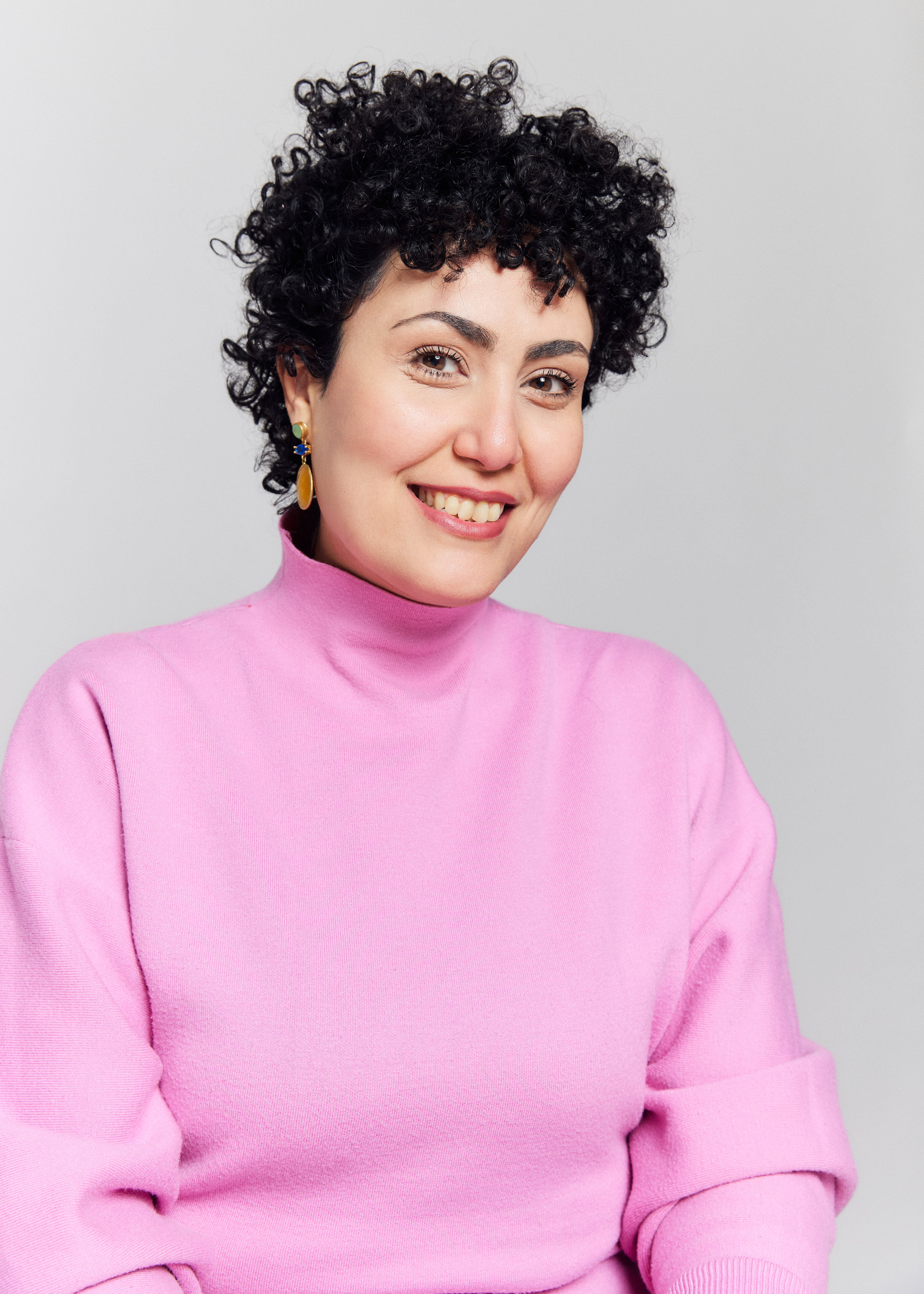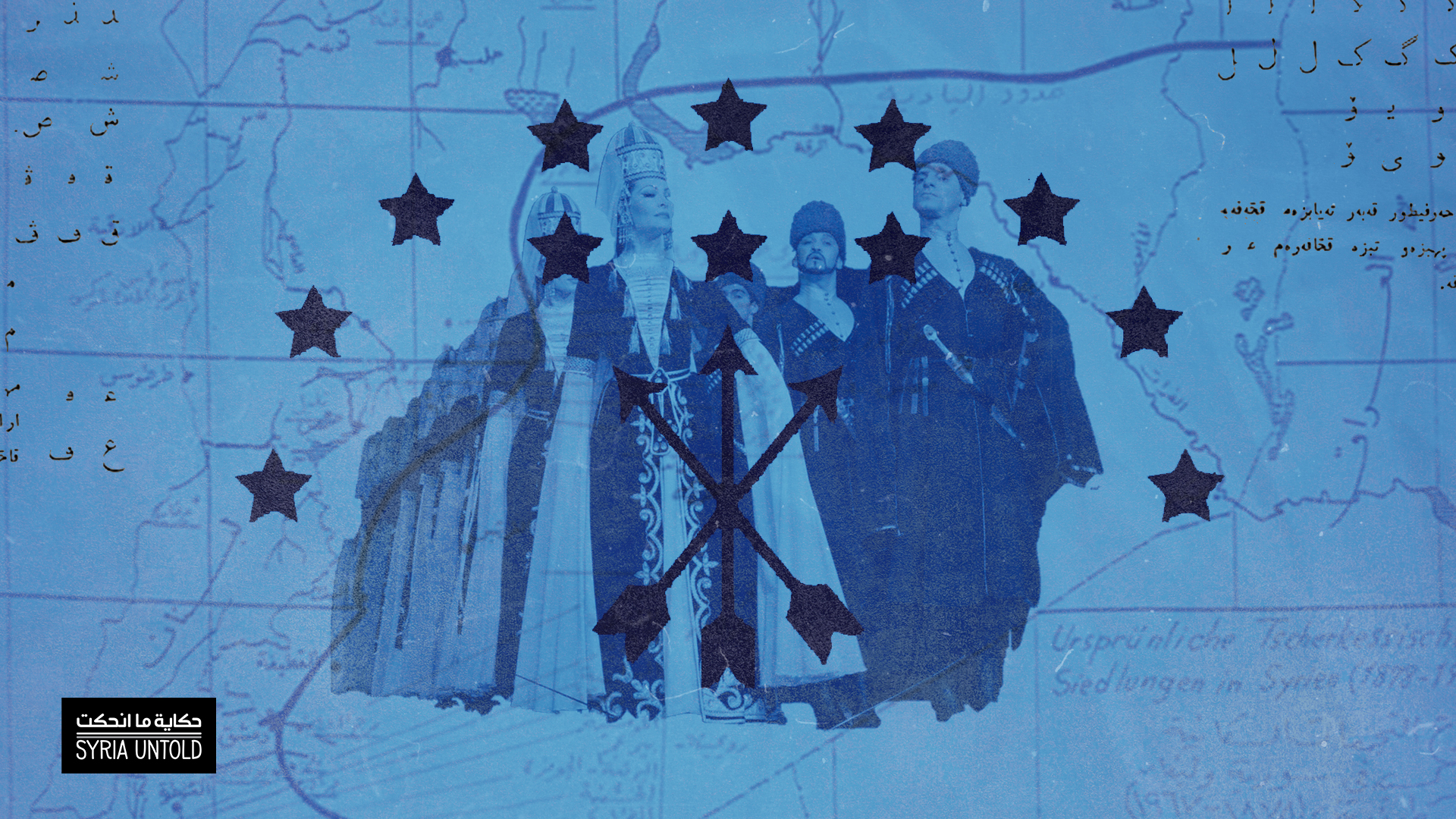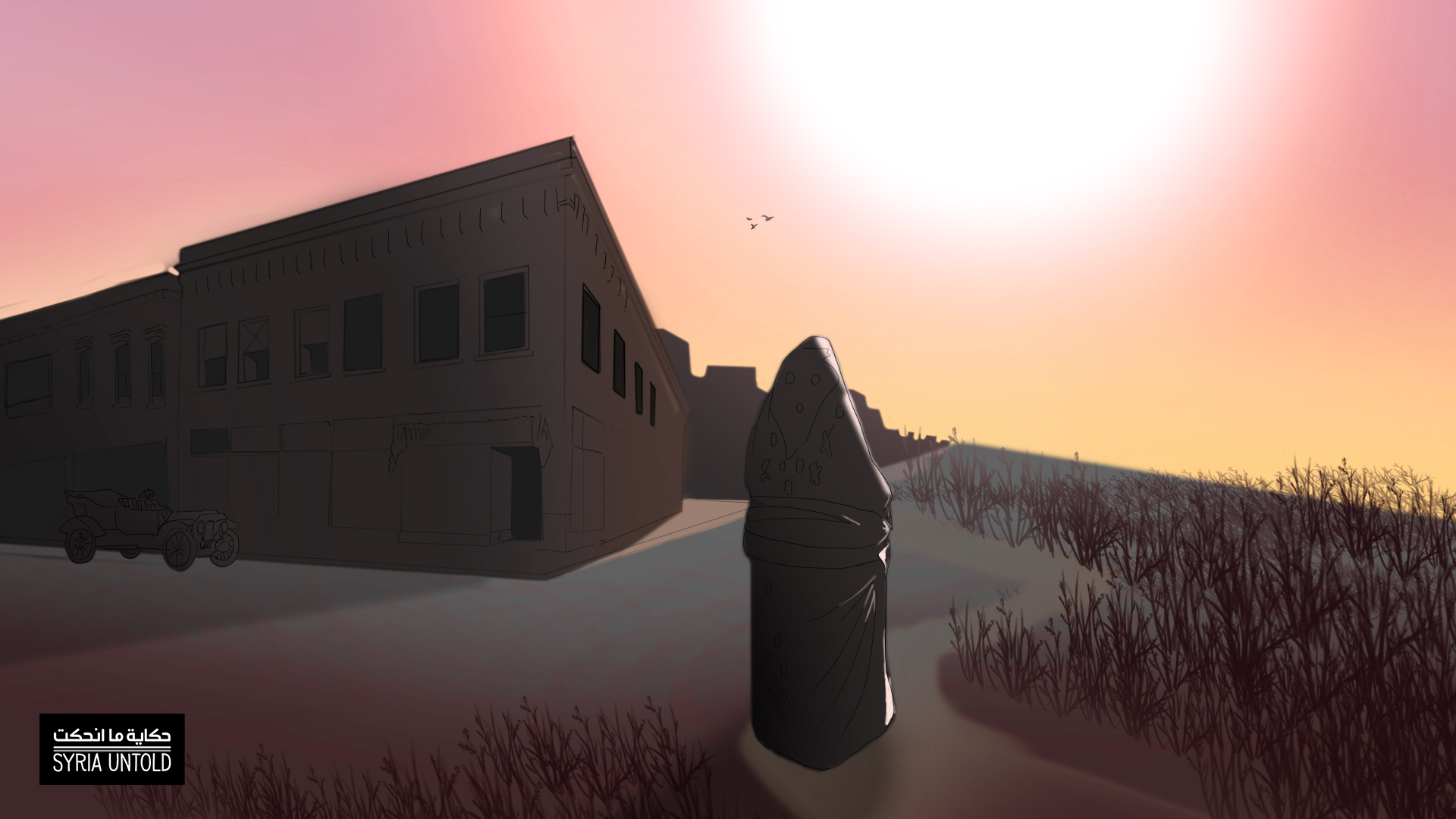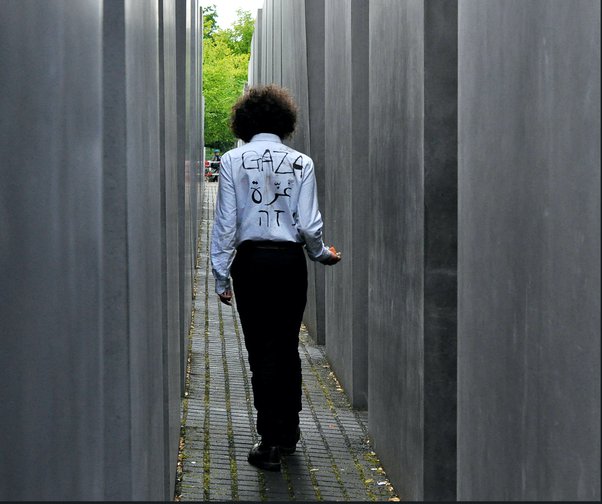"It was past six in the evening when the news started trickling in through WhatsApp groups and social media: a missile had landed in the Majdal Shams playground. At first, I wasn't afraid,” says Hani Zahwa, a political and cultural activist from the village of Buq’ata in northern occupied Golan Heights. “I didn't expect any damage or that children would be present at the site during the incident. But then the images began to arrive: children's remains on the playground wall! It was the biggest shock of my life.”
Zahwa recalls the tragic attack on Saturday 27 July in the village of Majdal Shams, which has a population of around twelve thousand. “The horrifying pictures quickly spread, and families started heading towards the village, overwhelmed with anger and disbelief at what had happened,” he continued. “When I arrived, witnessing the grief-stricken families, especially the mothers, was a scene beyond what words could describe."
On that day, a rocket fell on a football field, injuring and killing 12 children and teenagers who were present at the time.
As for Wael Tarbih, a painter and art teacher from Majdal Shams, he described the event to SyriaUntold as "the catastrophe that shook the village’s residents." He added, "There was a prevalent belief among the people of the Golan that they were safe from the ongoing conflict and not a target for any side—whether Israel, Lebanon, or even Syria. The expectation was that any harm would be accidental, like stray missiles or a failed operation. But what happened was shocking, especially since the victims were children, and the outcome was incredibly tragic."
Zahwa emphasizes the profound impact of the massacre on the people of the Golan, saying, "The incident was catastrophic in every sense of the word. Never in the history of the Golan have we lost twelve children or people in a single day. The surviving children are facing extremely difficult psychological effects, and psychologists in Majdal Shams are working daily to treat them, as well as the families and relatives."
This "black day in the history of the Golan" shattered the relative calm that had prevailed in the occupied plateau, which borders and intertwines with Lebanon. Meanwhile, the geographical scope of Israel's war on the besieged residents of Gaza was expanding day by day following the 7th of October, and quickly extended to include Israel's northern front along the Lebanese border in response to Hezbollah's missiles. This is what Zahwa confirms in his conversation with SyriaUntold, based on his observations. As a dental technician, Zahwa frequently travels from the Golan to the city of Karmiel in the Galilee. "The security situation in the area wasn’t highly tense at that time, especially concerning the Lebanese front, despite some restrictions and instructions from the local Israeli authorities in the Golan Heights," he noted.
Nevertheless, the weight of the early days of the second week of October, as the world awaited Israel's response to the Hamas attack, was heavy for many residents of Majdal Shams, the largest of the five Syrian villages in the occupied Golan Heights. This is recalled by anthropologist Maria Kastrinou, in an interview with SyriaUntold. Since 2007, Kastrinou, a lecturer at Brunel University in London, has been conducting extensive ethnographic field research among Syrian communities of the Druze religious sect in Damascus and the Golan Heights.
She gathered this insight from text messages exchanged with her friend Kamel (a pseudonym), whom she had met in Damascus in 2009 when he obtained a university degree in English literature.
Kastrinou notes that Kamel, who lives with his family in Majdal Shams, wrote to her on 8 October 2023, saying, "The children are very anxious. I bought them food and water. We are preparing for a major war in the region." He, his wife, and their two children stayed indoors for over a month after the war began, continuing their studies through Zoom.
The outbreak of the anticipated war had a personal impact on the Golan residents. "When the northern front opened in the week following the 7th of October, the evacuation of Israeli settlements began, which significantly affected the residents of the Golan Heights who worked in these areas. For example, Arab doctors who worked in Kiryat Shmona, which was evacuated, lost their jobs, and this affected their livelihood," Zahwa explains, adding that he, too, lost his job during that period.
Despite the tensions, daily life in the occupied Golan, including Majdal Shams, gradually returned to normal. Schools and nurseries reopened, as Kamel informed Kastrinou in their exchanged messages during the first nine months of the war. However, despite this "normal life," parents had to contend with the sounds of sirens and drones in the skies over Majdal Shams from time to time. In one of his messages at the end of June, Kamel told her, "Every day I face the risk of rockets on my way to work, and I encounter the same danger when I return home."
“A Forgotten Area Until Disasters Happen”
Media attention has been entirely focused on Gaza, to the extent that the rising violence of settlers against the residents of the West Bank has been overlooked within the repressive policies of the occupation. Meanwhile, the “containment policies for the population in the Golan Heights, especially the younger generations, continued through budget allocations for local authorities. This policy is based on the idea that a portion of the population has become Israeli citizens, and over time, everyone will become so,” describes Wael Tarbih, a painter who also serves as the director of the Economic, Social, and Cultural Rights Program at the al-Marsad Foundation, the only human rights organization in the occupied Golan Heights, based in Majdal Shams.
Syria’s Circassian minority divided, scattered by years of war
27 September 2021
Thus, the Golan Heights and its inhabitants have remained largely marginalized from international and Arab media coverage related to what is termed the "conflict in the Middle East," despite the strategic importance of its geographical location for the occupying state since it seized control during the Six-Day War in 1967, intersecting its borders with Jordan, Lebanon, and Palestine. The Golan Heights is home to many Israeli military bases.
Even before the 7th of October, the Golan was seen as "a forgotten area until disasters happen," according to Tarbih. He explains, "The Golan is forgotten because it has a small population of about 28,000 Syrians compared to around 29,000 settlers. In recent years, settlement activity in the Golan has intensified, and for the first time in two years, the number of settlers has surpassed that of the original inhabitants in the five villages. They live in an area of 1,200 square kilometers in the far north of Israel, which is why it only appears in the media during times of disaster or when political exploitation of the sectarian identity of the Druze residents of the region is attempted." He adds, "Since its occupation in 1967 until 1982, the Golan was also forgotten by the Syrian regime, until the ‘identity uprising’ occurred, when Israel officially imposed the law to annex the Golan, which stipulates granting Israeli citizenship to its residents—a move rejected by most of them."
Indeed, the people of the Golan returned to the forefront of news bulletins after the missile fell in a football field in Majdal Shams.
Media and the Omitted Facts
Suddenly, on the eve of 27 July, the Golan Heights became the focus of repeated and familiar media inquiries, with its name echoing once again due to the catastrophe: Who governs it? Where is it located? Who are the Druze living there? And what is Majdal Shams that could ignite a war between Israel and Hezbollah?
Although Israel was simultaneously waging a war on Lebanon, it did not escalate its actions against Hezbollah at that time, which it directly accused of launching an Iranian missile at the playground. However, a different kind of war broke out; or rather, a new media battle led by Israeli media, supported by some Western media outlets, aimed at reinforcing the Israeli policies of de facto control over the Golan Heights that have persisted for 69 years. One of the most notable of these policies is the imposition of Israeli citizenship on the Golan residents. This measure was met with strong rejection from the population at the time, as they declared a general strike that lasted for six months between February and July 1982 in response to this threat to their Syrian identity. The residents viewed this action as part of the occupation's policies aimed at altering the demographic makeup and cultural identity of the region, as noted by Kastrinou, in her research on statelessness and citizenship in the Golan Heights.
Some international media outlets presented a misleading image of the identity of the Golan Heights residents under occupation while covering the tragedy in Majdal Shams. The German public broadcaster ZDF faced sharp criticism after describing the incident as a "deadly attack on Israeli civilians" in the Golan, directly quoting the Israeli army. The channel later apologized for adopting this narrative without clarifying the facts to its audience.
This media characterization ignores the reality that the United Nations considers the Golan Heights to be occupied Syrian territory. It also denies what the residents of this area endured during the Arab-Israeli War in 1967, which Kastrinou described as witnessing "the largest ethnic cleansing operation in history since the end of World War II, in terms of geographical area." This is according to a study conducted by al-Marsad on the Syrian residential communities that Israel destroyed following its occupation of the Golan in 1967.
A different kind of war broke out; or rather, a new media battle led by Israeli media, supported by some Western media outlets, aimed at reinforcing the Israeli policies of de facto control over the Golan Heights.
Kastrinou explained that "95% of the original Syrian population were forcibly displaced, and only five villages out of 340 villages and farms remain. A Druze majority inhabited four of these villages (Majdal Shams, Mas'ada, Buq'ata, and Ein Qunya). The residents of the village of Ghajar are followers of the Alawite sect. At that time, only 6,011 people remained from a total of 142,000."
Regarding the legal status of the Golan residents, Tarbih clarifies that the overwhelming majority, about 75-80%, hold undefined nationality, except for those who have applied for Israeli citizenship and have become Israeli citizens. He states, "Similar to the Palestinian residents in East Jerusalem, we do not possess passports; instead, we carry the 'yellow document' designated for permanent residents according to Israeli laws, meaning we are permanent residents and not citizens of the State of Israel."
This media error regarding the identity of the Golan residents and their national affiliations is not an isolated incident; rather, it is part of a broader Western and Israeli narrative that has persisted since before 7th of October and continued throughout a year of the massacre of Palestinians in Gaza. In the months leading up to the Majdal Shams incident, life in the Golan was portrayed as entirely normal, with people continuing their daily activities, such as visiting cafes and restaurants.
Tarbih explains that Israeli media was the dominant voice during that period, leading to the marginalization of any opposing voices or support for the Golan Palestinians or for the ‘48- Palestinians.
"The Sectarian Card" During the War on Gaza
In that artificial climate devoid of political action, political and cultural activist Hani Zahwa, who was born in the early 2000s to a religious Druze family and developed his political consciousness during the difficult years Syria has faced since 2012, considered my conversation with him via Zoom a "long-awaited opportunity" to align with his convictions and speak about them openly. He introduced himself as an "Arab Syrian, as the identity of this region (the Golan)." He emphasized that he is not only Druze, but that he possesses a comprehensive identity composed of three elements: Arab nationalism, Syrian national identity, and Druze religious identity. He added that the religious component, for him, is marginal and not the foundation of his identity.
Book preview: Ottoman Syrians at home in the American Midwest
05 October 2021
Despite the generational differences, Tarbih’s response echoed Zahwa’s, who also defined himself as an "Arab Syrian living under occupation." Zahwa regarded the insistence on belonging to Syria as an "act of resistance" against Israel's ongoing attempts for decades to fragment their Syrian and Arab identity and transform them into a separate Druze sect.
Six years after the occupation of the Golan in 1974, the Israeli occupation tightened its grip on the residents by employing the "sectarian card" to create a complete identification between the Druze of Israel and the Druze of the Golan. Tarbih pointed out, "Israel sought to establish educational curricula for followers of the Druze sect, aiming to build a new identity for the Syrians similar to what it did with the Druze of Israel... but the difference between us is clear. Israel is trying to put us in one basket."
Castrén clarifies that "the reason behind this is the simplistic colonial assumption that equates religion with politics... that is, the existence of the same religion means that people will have the same type of political orientations."
Over the past year, the "one basket" policy has been clearly reflected not only in Israeli media but also in the fragmented Western media coverage of the Golan residents' stance on the war of extermination. For example, a video report published on France 24 titled "Arab Druze Soldiers Proud to Serve in Israel's War" suggested that the Druze of the Golan and the Druze of Israel are "one entity," ignoring the fact that most Syrians in the Golan are stateless and refuse to enlist in the Israeli army.
Even when the residents of the Golan Heights returned to the forefront of international news due to the tragedy of the children killed in Majdal Shams, Western media coverage, if it did not refer to them as "Israeli citizens" as the German television station did, focused solely on their identity as Druze and labeled their village as a "Druze village."
Simultaneously, Israel seized the opportunity to reinforce its project of creating an "artificial identity" for the residents of the Golan Heights, similar to the ongoing project since the 1950s to establish an "Israeli Druze identity" through the production of "ethnic differences," as Dr. Kastrinou explained.
Wael Tarbih recounts that following the Majdal Shams incident, "Israeli occupation leaders rushed to the scene as soon as it occurred, with Netanyahu, Smotrich, and other ministers attempting to portray it as a deliberate act by Hezbollah (the Shiite party) to kill the Druze children of Majdal Shams." At the same time, the local authority under Israeli control tried to take charge of the funeral rituals by moving them to the football field under their supervision. However, this attempt failed due to the insistence of the families on burying the children in the traditional manner. The symbols of the Israeli government were also expelled from the site.
Silence Following the 7th of October
Tarbih explains that the current situation represents a significant departure from the past, where the residents of the Golan would typically issue statements of solidarity or send delegations to support Palestinian causes during times of crisis. However, since the 7th of October, those public political movements have ceased. He shares his observations from Majdal Shams during those months, stating, "After the 7th of October, Israel has been living under strict emergency laws, some of which are alarming in their infringement on basic rights. For instance, consuming certain media content could expose any Arab to imprisonment for up to three years. Just following a page on Instagram or Facebook that is deemed 'hostile' to Israel could lead to immediate arrest... In a small village community like Majdal Shams, the local authorities only need to summon someone for interrogation or detain them for a few days, and the news spreads quickly, serving as a clear warning to others. This explains the lack of human rights reports about such threats."
He points out that the atmosphere of repression and fear, coupled with emergency laws, has created an "artificial calm," meaning that "there is a kind of unreal... artificial tranquility. People go to work and come home in silence, but that doesn’t reflect what they feel in their hearts." He explains that he has stopped writing on social media to avoid a "huge risk."
Many Crossing Rockets and Few Sirens
Despite the renewed global attention to the ongoing massacre in Gaza, the lives of the Golan residents changed dramatically after 27 July. Whereas concern about the sirens was previously limited, now any siren is enough to send all the residents of the Golan to the shelters. "The state of fear and panic has become very intense among the people," says Hani Zahwa, describing the atmosphere in his village, Buq'ata.
With the recent escalation on the northern front, starting from the assassination of Hezbollah leader Fouad Shukr to the party's chief Hassan Nasrallah, along with the limited military operations being carried out by Israel in southern Lebanon, an atmosphere of caution and anticipation prevails. While Tel Aviv is under missile attacks, Zahwa states, "We hear the sounds of shelling in the northern region clearly and continuously, but there’s nothing new for us in terms of sirens or internal security instructions. The situation here is relatively stable. Sirens were heard in our village two days ago for the first time in a long while."
The atmosphere of repression and fear, coupled with emergency laws, has created an "artificial calm."
However, Zahwa notes the stark difference between the situation in the Golan and the northern region of Israel, where he has been working: "The situation there is very difficult, with sirens sounding frequently, and there is a noticeable reduction in working hours due to these circumstances. We also observe military movements in the streets, and the atmosphere overall resembles a war in every sense of the word. We see smoke clouds resulting from the Iron Dome intercepting missiles, and the sirens are clearly heard."
Zahwa explains that schools have been closed since the escalation in the Golan Heights, and local authorities issue daily instructions warning farmers to avoid the fields and urging residents to stay in safe places. He points out that the emergency measures imposed by the Israeli occupation authorities apply to the villages of the Golan just as they do to the northern settlements adjacent to the border with Lebanon.
In Majdal Shams, the community remains in a state of psychological shock since the incident of the children's deaths, and the village now finds itself in the "eye of the storm," as Tarbih feels. It is the calm point amidst massive disturbances in the surrounding region, from Lebanon to Palestine. Although the villages of the Golan, including Majdal Shams, are not direct targets of military operations, missiles pass over the villages daily, causing the homes to shake with every strike.
At a time when the people of the Golan Heights from different generations, like Zahwa and Tarbih, who are committed to their Arab and Syrian identities, find it challenging to express their political positions publicly due to Israeli laws and repression, Tarbih, who is 56 years old, shares his personal feelings about the current events through his news consumption. He says, "Anyone who considers themselves part of the broader Arab culture and civilization should deeply feel the tragedy that the Palestinian people are going through, from cultural genocide to being left prey to the brutality of massacres without support. This tragedy is not separate; it is an extension of what began with the Syrian people. Personally, like many others, I have felt this since 2012, when the Syrian revolution was distorted and its course manipulated. We feel as if we are undergoing a moral genocide, while the Palestinian and Lebanese people are currently witnessing physical and bodily extermination."
Meanwhile, Zahwa, who is 24 years old, uses social media as a tool for symbolic resistance. Under his Facebook profile description, he wrote: "I believe in my right to freedom and my country's right to exist, and this belief is stronger than any weapon... Syrian, freedom forever."










